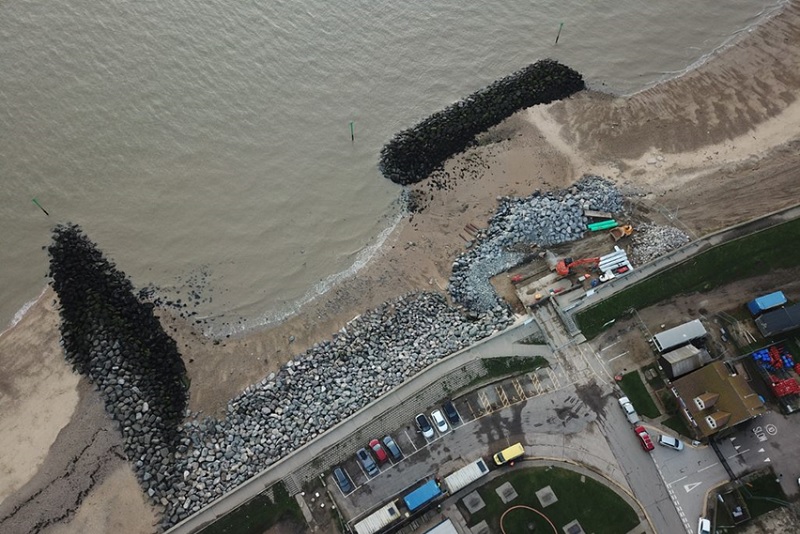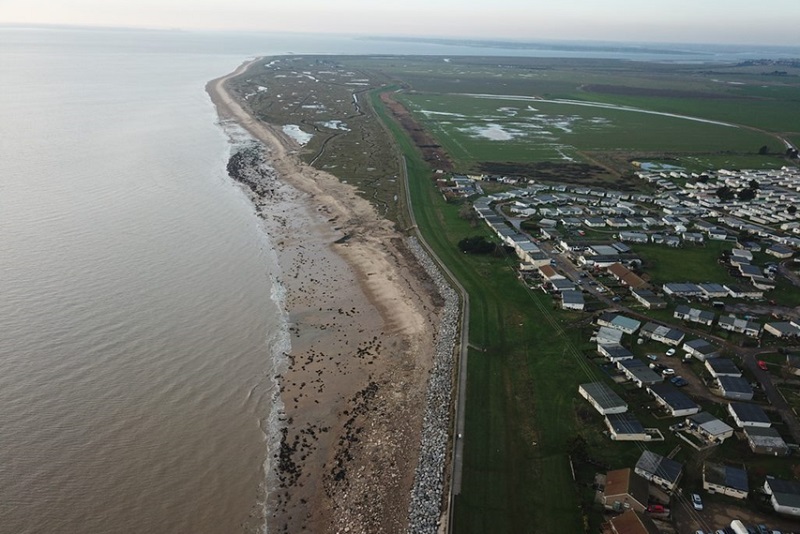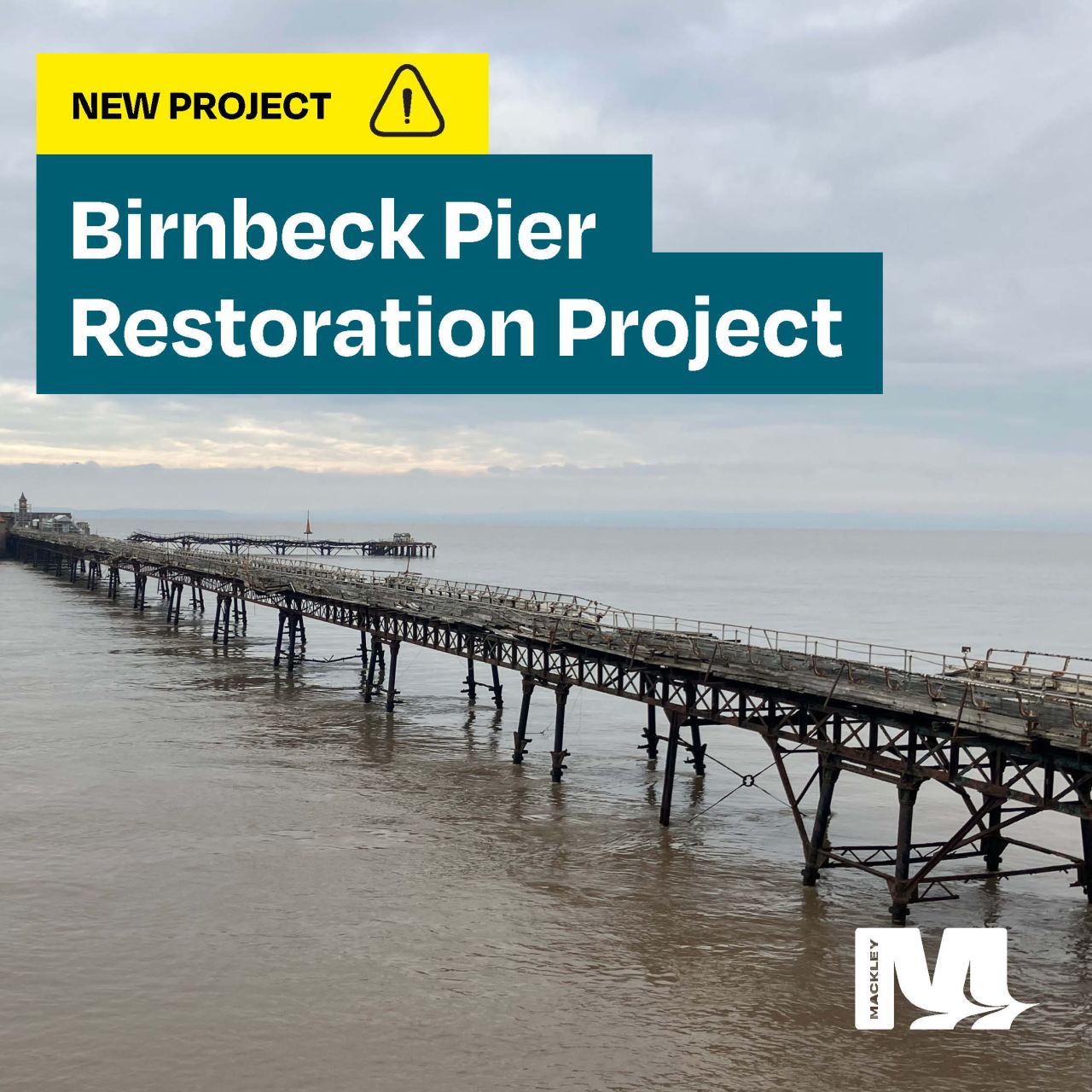
A project to improve the sea defences protecting a popular holiday destination on the Essex coast is nearing completion.
The Seawick Sea Defences project is being carried out by Mackley as the main subcontractor to Van Oord, and on behalf of the Environment Agency.
The scheme is improving and extending the rock armour around the seawall at Seawick, Essex in two areas: ‘Hutley’s Gap’ and a secondary area to the west. This will better protect against current and future erosion and extend the useful life of the seawall.
Work started in the autumn and is nearing completion. Expected completion is early 2021 rather than the end of 2020, due to additional work instructed by the client. Mackley identified signs of damage to the gabion baskets and evidence of water ingress eroding material under the platform at Hutley’s Gap.
The project team worked together to find a timely solution that could be undertaken within this scheme to avoid costly remobilisation at a later date: piling and concrete works to repair part of the concrete platform at Hutley’s Gap and adding extra rock to better protect against erosion.

To better improve public access at the western end of the new rock revetment, a permanent staircase has been designed to replace the current temporary staircase arrangement in place at the moment; and this is due to be installed around Easter.
Seating and hand railing will also be installed on top of the seawall around the Hutley’s gap area to provide an improved space for footpath users. A tree/hedge planting scheme is also being currently finalised which will help to increase the biodiversity of the area and offset some of the carbon released during construction.

Working has been adapted due to Covid-19, with limits on numbers attending site and in the offices, regular cleaning and engagement for the project was using a letter drop and online webpage, rather than face-to-face. The team has liaised with the seasonal ice cream and snack kiosk (a popular fixture at Hutley’s Gap) to keep them up-to-date with the work and explain what the scheme will look like.
In addition, the team was keen to engage with the local school even though it was not possible to visit the school, or have school pupils visit us. Instead, a lesson plan including information about the project, flood defences and the geology of the rock used for the rock armour was provided to the local secondary school, which received very positive feedback.
22 February 2021


